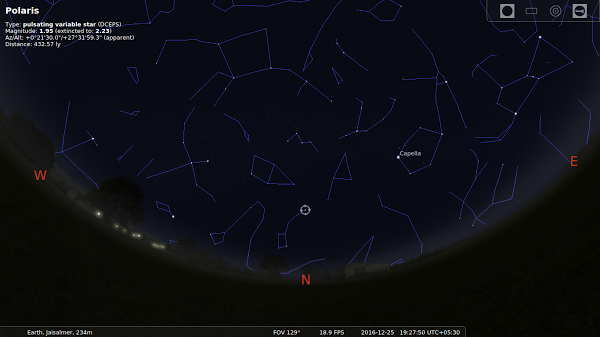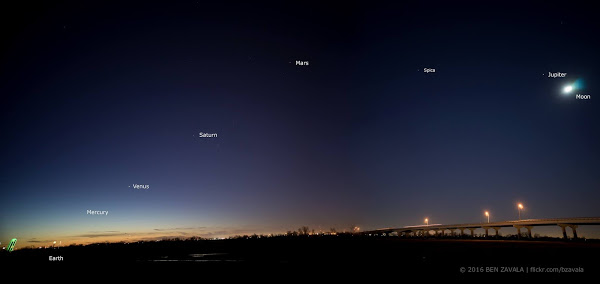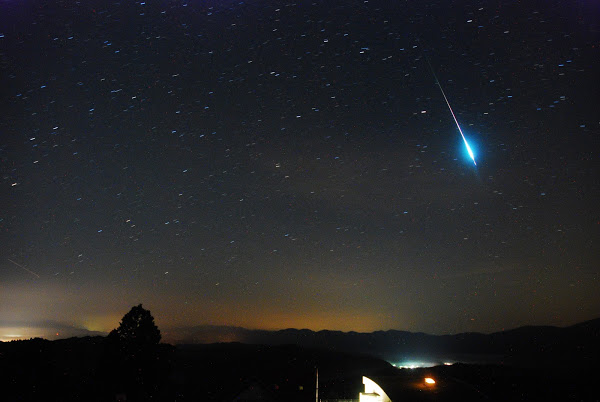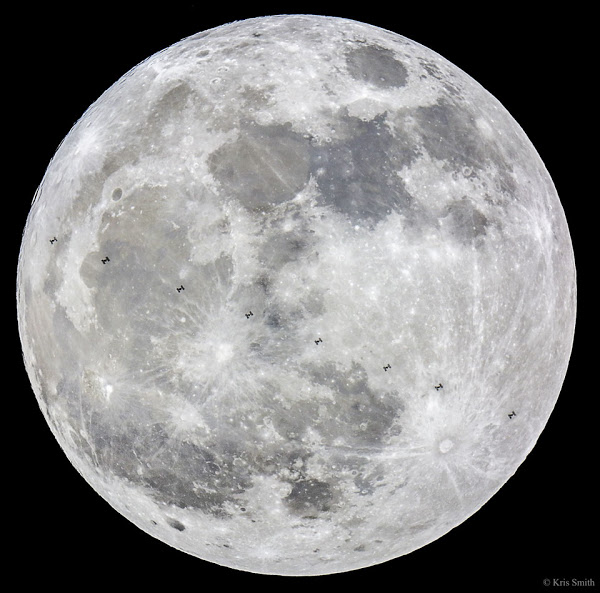Posted on Dec 30, 2016 in STEM in the Outdoors
1 Comment

In our busy lives, we rarely look up to observe the wonders in the sky above. The is mainly due to two reasons: –
What we have forgotten over time is that the wonders of nature are as existent above as below. The night sky holds many secrets of our origins and to see some of that, one doesn’t need a telescope. Read through this article to find out the top 5 things that you can see in the night sky with you naked eyes.
Our natural satellite is the brightest object in the sky after the Sun and on most days we can’t miss it due to its sheer size in the sky. The Moon is actually 1/4th the size of the Earth and is the largest natural satellite for any planet, ratio wise.
The Moon holds a very special place in human evolution and it can be found in all kinds folklore and mythology. Here in India, almost all festivals are celebrated according to the Lunar calendar.
Examples are :-
Before the invention of the telescope, the only way to view the Moon was with the naked eye. As it was the brightest object in the night sky, several local names are direct translations “the Moon” across regions. There have been accounts in several encyclopedias and treatises across civilizations of Solar and Lunar eclipses (both caused by the Moon) and several poets and writers have glorified our natural satellite in their works. This brings the Moon to the top of our list.
You can find out about the current phase of the Moon, it’s rise and set time with a help of a free app called “Phases of the Moon”. It is available for Android and iPhone.

Embedded in the pollution and glare of the city skies are not so bright but twinkly objects called stars. Every star that we see in the night sky is trillions of kilo meters away from the Earth is outside our solar system. In reality most of these stars would be much brighter than the sun if kept at its place but due to their sheer distance, we see them as dots in the the sky.
There are some stars, which are very bright and even in the most light polluted cities in the world, they can be viewed with little difficulty. There are software which can assist you in viewing the stars and the constellations they are in and with some planning and effort you can actually start locating stars in the sky easily. One such software is Stellarium. It is a free distribution which is available for Windows, Mac and Linux operating systems. A paid version is available for Android which can be pointed in the sky to know the name of the object you are looking at.
With the help of stellarium, you can see the sky of any place in the world at anytime and any date. You can plan whole overnight observations using this software. For those who are interested, you can also find your zodiac signs.
The software is very easy to use and for the novice, there are a lot of tutorials available on Youtube.

You will be surprised to know that even without a telescope or binoculars, you can view planets in the sky very easily. The word ‘planet’ comes from the greek word ‘planetes’ which literally means wanderers. If you observe them over several weeks, you can actually spot them hopping from one constellation to the other at a very slow pace.
The five planets which you can see in the night sky with unaided eyes are as follows:-
Of these, Mercury is the most difficult to spot as it’s very close to the Sun and is also very small in size. The rest keep are easier to spot due to their separation from the Sun and their sheer brightness.
Stellarium, can be used to find out the position of planets and plan observations. Remember, it is very rare that you spot all the planets in the sky, all at the same time.

Every day about 30 tonnes of space debris enters the atmosphere of the Earth giving birth to shooting stars. In real, these are not actual stars but space junk like rocks, dust particles and ice pieces which fall on to the Earth due to its gravity. These space rocks move at a speed between 30,000 km/h to 60,000 km/h and when the enter the atmosphere of the Earth, the burn up due to the rapid fire of air molecules on them. This gives rise to the characteristic streak.
Sometimes, earth enters are a dust field (mostly the left over dust by comets and asteroids) and the rate intensifies. These meteors all seem to come from the same direction and are named after the constellation from where they seem to radiate. There are several meteor showers that occur every year and some of them put a really good show, even when seen from the city.
Here are some links which will help you plan in advance:-
Meteor shower FAQ – https://www.timeanddate.com/astronomy/meteor-shower/
List of Meteor showers – http://www.go-astronomy.com/solar-system/meteors.php

ISS Transits Moon
We have progressed a lot in the last century and a direct result of that is technological advancement. To make things easy for us, we create networks of communication and machines which execute that task. A very advanced form of such technology is Satellite Technology.
The first satellite ’Sputnik’ was launched in 1957 and since then, there have gotten only bigger. The likes of the International Space Station are the size of a football field and Astronauts live there and conduct experiments on long duration space travel and other things. The surface of these satellites, especially their solar panels are very reflective and can been seen from anywhere on the earth, even from the center of blazing sound and light show.
There several other satellites that you can see pass right above your head but they will be less brighter, so depending upon the sky conditions in your area, you can give spotting them a slot. The image above shows the passage of the ISS in front of the Moon.
You can plan your satellite observations using the following apps
App for Android – Heavens Above , App for iPhone/iPad – Satellite Watcher.
EdTerra conducts specialised astronomy camps as a part of the GoDirect program. If you are between the age group of 12 to 16 years and are marvel at how things work around in space, you can directly enroll for these exciting programs! To know more about GoDirect click on this link or call +91 11 48885800.
Rishabh Jain: Popularly known as ‘astronomy guru’ to friends and colleagues, Rishabh has an asteroid discovery to his credit. From computer language, he moved to the language of astronomy and astrophotography, his work having featured on BBC Earth and Universe Today. He writes on the subjects of science and technology, and conducts science based programs at EdTerra.

During our visit to...

Kerala is known as...

School trips are quintessential...

We believe that Saputara...

Agra is an amazing...

Block printing is an...

Our trip to Ranthambore...

Our Journey to Pune...

During our educational trip...

Our trip to Pench...
See What Our Edventurers Experience!
3 Responses to Five Things You Can Spot in the Night Sky with Your Naked Eyes